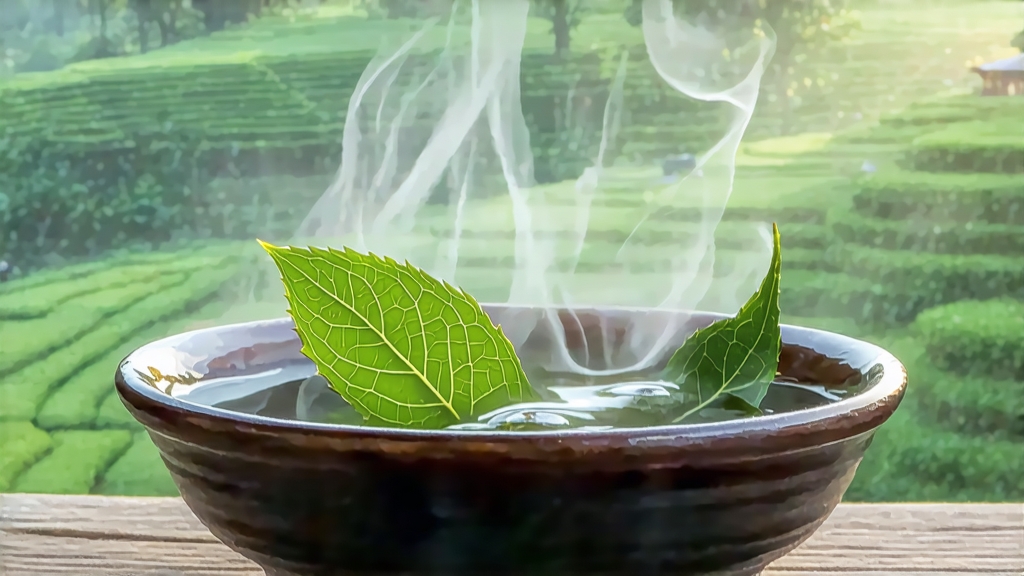
Rising like a jade dragon’s spine through the subtropical clouds of central Taiwan, the Alishan mountain range has, for almost two centuries, coaxed tea bushes into producing one of the world’s most fragrant oolongs. International drinkers often meet “Alishan High-Mountain Oolong” as a bright, orchid-scented liquor in tiny sample packs, yet behind each pale-gold infusion lies a layered story of Qing-era migration, Japanese colonial agronomy, post-war craftsmanship, and modern eco-certification. This essay invites you to travel from seed to sip, unpacking the cultivars, the fog-bound terroir, the meticulous 24-hour choreography of leaf transformation, and the quiet ritual that turns crumpled pellets into a cup that tastes like mountain wind.
-
Historical Footprints in Cloud Soil
Tea first scaled Alishan in the late 1700s when Fujianese settlers ferried Qingxin (literally “Clear Heart”) cuttings across the Taiwan Strait. For a century the leaves were rolled into striped baozhong-style oolong and sold in Taipei’s Dadaocheng district. The pivotal shift came under Japanese rule (1895-1945). Colonial agronomists, hunting for export-grade black tea, discovered that bushes planted above 1,000 m refused to redden fully; instead they yielded a jade-green leaf with intense aromatics. After WWII, the Kuomintang government promoted high-mountain plantings to replace poppy crops, and by the 1980s Alishan farmers had perfected the tight-ball rolling technique that traps fragrance and withstands the altitude’s cooler, drier air. Today the Alishan National Scenic Area harbors roughly 2,300 hectares of certified high-mountain gardens, many farmed by fourth-generation tea families who still wake to the sound of Formosan macaques rustling through Camellia sinensis. -
Cultivars: The Genetic Poetry
While “Alishan” is not a cultivar but a Protected Geographical Indication (PGI), two clones dominate. Qingxin Oolong (TRES #12) contributes the signature milk-white orchid note and a finish that lingers like violin vibrato. The newer Jinxuan (TRES #12, nicknamed “Milk Oolong” for its buttery lactones) is sometimes interplanted at lower elevations, but purists insist only Qingxin grown between 1,000–1,400 m deserves the Alishan title. Spring flushes (March–April) offer the highest amino-acid load, whereas winter flushes (October–November) trade body for heightened aromatics—think alpine lilac after rain. -
Terroir: Where Clouds Become Flavor
Alishan’s diurnal swing can exceed 15 °C; photosynthesis halts at dusk, preserving sugars and volatiles. Ultraviolet intensity rises 15 % for every 300 m gained, triggering catechin–amino acid reactions that soften astringency. The soil is a young andesite loam, porous and mineral-rich, draining quickly so roots struggle—stress that concentrates flavor. Most gardens face east, catching sunrise that burns off dew and discourages fungal disease. The result is a leaf that carries, in chemical shorthand, more linalool and geraniol (floral), less EGCG (bitter), and a rare ratio of soluble sugars that translates into what Taiwanese cuppers call “yun”: a reverberating cool sweetness that arrives three breaths after swallowing. -
Craft: The 24-Hour Ballet
Pickers arrive at 7 a.m. when dew still weights the leaf, increasing pliability. Standard is “two and a half leaves” (the half being the unopened bud). Once back at the cottage, leaves are solar-withered on bamboo trays for 30–45 minutes; UV triggers initial oxidation enzymes. Indoors, they are tossed in tumbling cylinders—this bruises edges to 25 % oxidation while keeping the leaf center green. A 2-hour rest on reed mats allows “water-walking,” moisture migration from stem to leaf, softening the spine for later rolling. Oxidation is arrested at 18–22 % by a 220 °C, 3-minute kill-green roast; the leaf smells like grilled sweet corn at this stage. While still warm, it enters the cloth-ball phase: wrapped in square cotton, pressed under a 70 kg wooden roller, then untied and re-wrapped every 5 minutes for 4 hours. The orbit-shaped pellets tighten, locking in oils